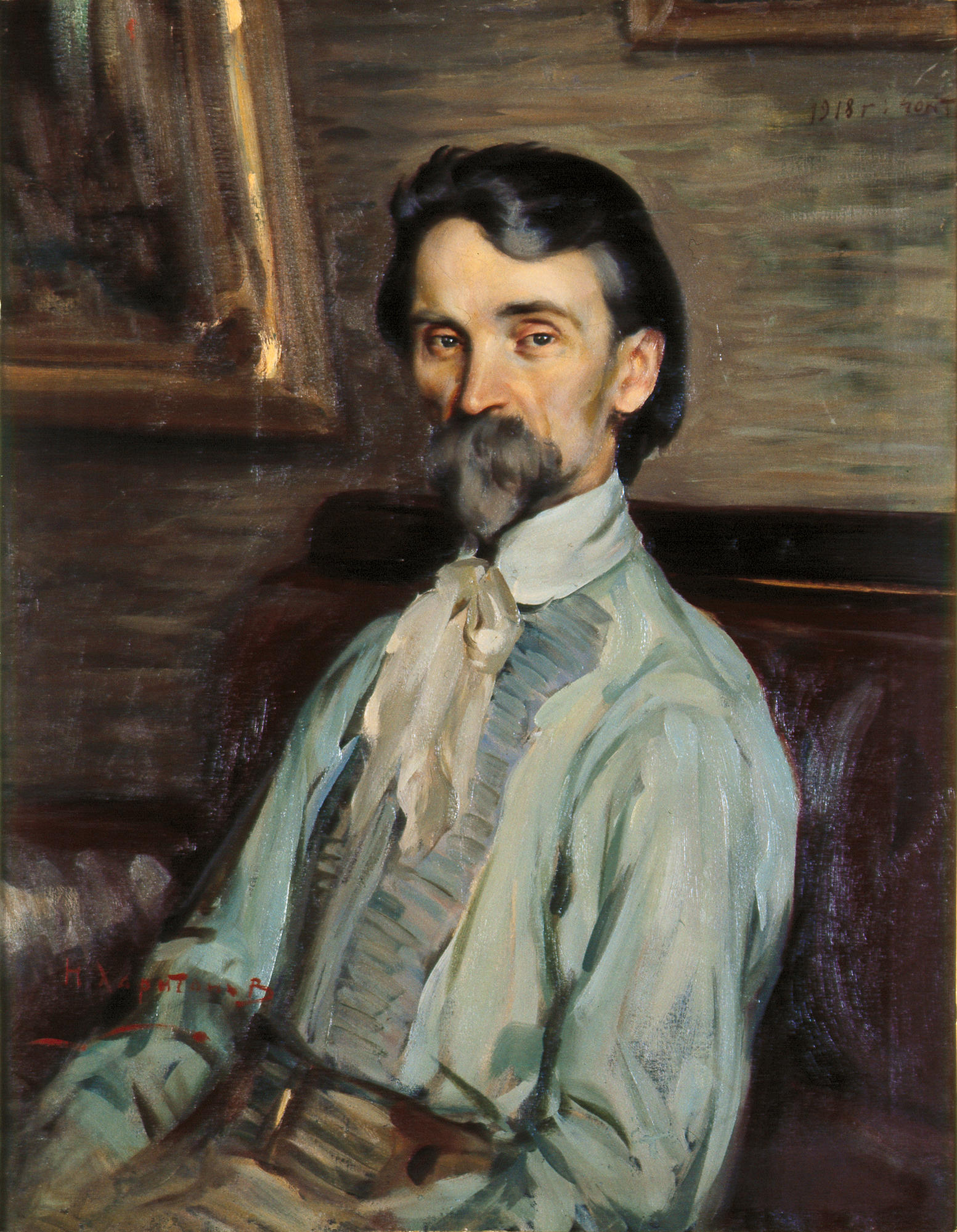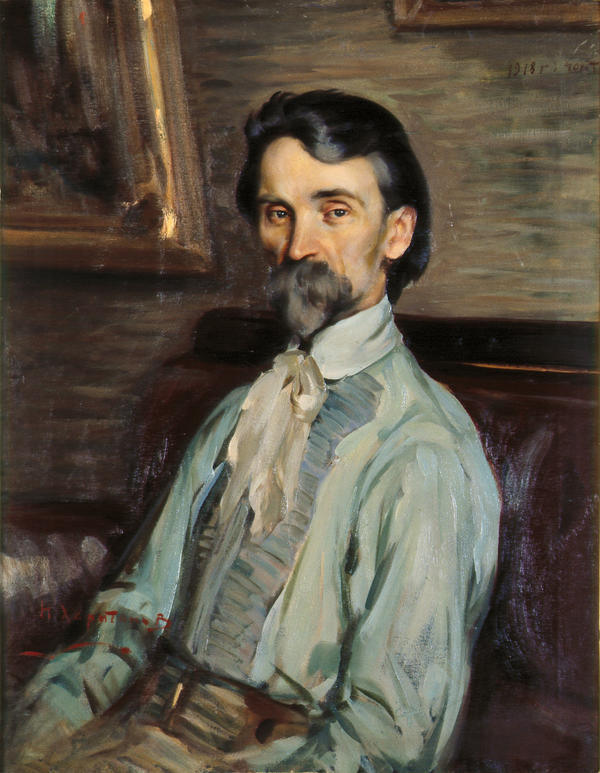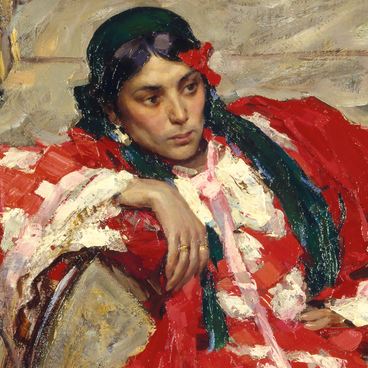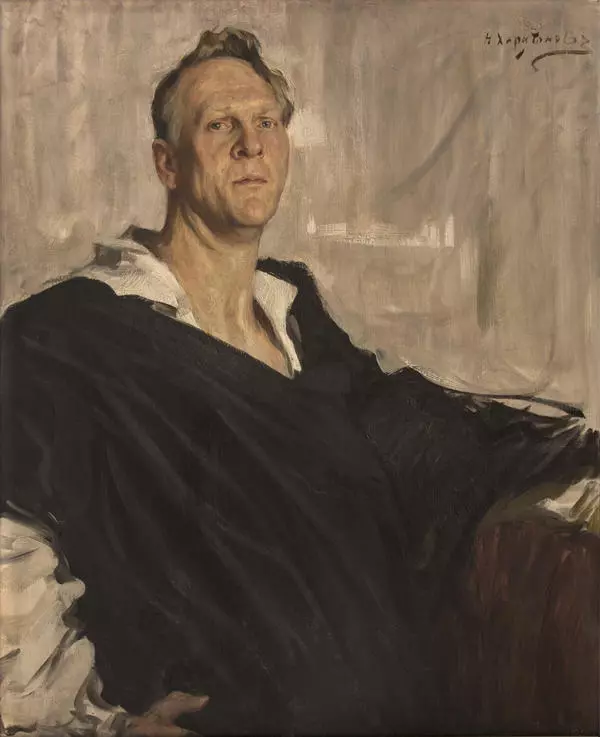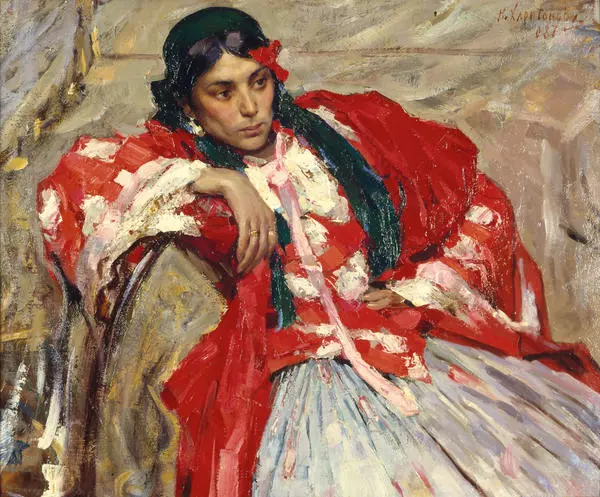Nikolai Kharitonov was an artist, landscape, portrait and genre painter. He studied in the Art School of the Society for the Encouragement of Artists and the studio of Lev Dmitriev-Kavkazsky. In 1901, Kharitonov became a non-degree student of the Imperial Academy of Arts, and in 1902-1909 was an unattached student of Ilya Repin. The artist was a member of various creative associations, including Arkhip Kuindzhi Society. In 1920, he emigrated to New York.
Fedor Kovalenko was an art lover, collector and the founder of Krasnodar Museum of Fine Arts. In 1904, he opened Ekaderinodar municipal art gallery with architectural and archaeological sections.
Since 1905, Fedor Kovalenko held annual spring and autumn Periodic Exhibitions of Paintings by Artists of the Academy of Arts and other Russian Schools. Between 1905 and 1919, he organized 17 exhibitions. Kovalenko’s collection consisted mostly of paintings by Russian artists of the last quarter of the XIX –early XX centuries and was constantly expanded. The collector purchased paintings at itinerant exhibitions, in the capital’s salons and received them as gifts from artists and the Museum of the Imperial Academy of Arts.
Fedor Kovalenko established an art talent group in his gallery, with Ilya Repin as the Honorary President. In 1911, the art talent group was restructured into the school of art and painting.
Nikolai Kharitonov participated in the gallery exhibitions since 1909 and had a long-standing friendship and correspondence with Fedor Kovalenko. The collector acquired 18 of his paintings for his gallery.
In 1917, the artist moved from Petrograd to Novorossiisk, and next autumn he came to Ekaterinodar and painted the portrait of Fedor Kovalenko. The painting became the last lifetime portrait of the founder of the first art gallery in North Caucasus — in February 1919, he died from typhus.
Nikolai Kharitonov portrayed an intellectual man with a genteel facial expression and sharp look. Fedor Kovalenko is sitting in a leather armchair, on the wall behind him are paintings from his collection. The master conveyed his business energy and artistic spirit.
Kharitonov made a special focus on composition in his portraits. He often unexpected angles and dramatic plastic solutions. However, he purposefully simplified the composition of this portrait, so that external effects do not divert attention from Kovalenko’s personality.
Fedor Kovalenko was an art lover, collector and the founder of Krasnodar Museum of Fine Arts. In 1904, he opened Ekaderinodar municipal art gallery with architectural and archaeological sections.
Since 1905, Fedor Kovalenko held annual spring and autumn Periodic Exhibitions of Paintings by Artists of the Academy of Arts and other Russian Schools. Between 1905 and 1919, he organized 17 exhibitions. Kovalenko’s collection consisted mostly of paintings by Russian artists of the last quarter of the XIX –early XX centuries and was constantly expanded. The collector purchased paintings at itinerant exhibitions, in the capital’s salons and received them as gifts from artists and the Museum of the Imperial Academy of Arts.
Fedor Kovalenko established an art talent group in his gallery, with Ilya Repin as the Honorary President. In 1911, the art talent group was restructured into the school of art and painting.
Nikolai Kharitonov participated in the gallery exhibitions since 1909 and had a long-standing friendship and correspondence with Fedor Kovalenko. The collector acquired 18 of his paintings for his gallery.
In 1917, the artist moved from Petrograd to Novorossiisk, and next autumn he came to Ekaterinodar and painted the portrait of Fedor Kovalenko. The painting became the last lifetime portrait of the founder of the first art gallery in North Caucasus — in February 1919, he died from typhus.
Nikolai Kharitonov portrayed an intellectual man with a genteel facial expression and sharp look. Fedor Kovalenko is sitting in a leather armchair, on the wall behind him are paintings from his collection. The master conveyed his business energy and artistic spirit.
Kharitonov made a special focus on composition in his portraits. He often unexpected angles and dramatic plastic solutions. However, he purposefully simplified the composition of this portrait, so that external effects do not divert attention from Kovalenko’s personality.
